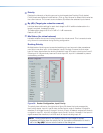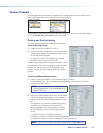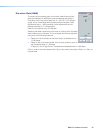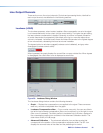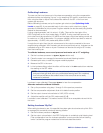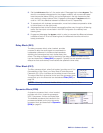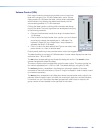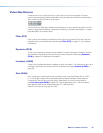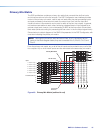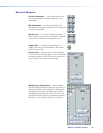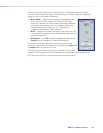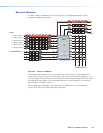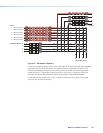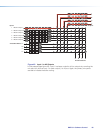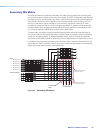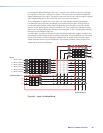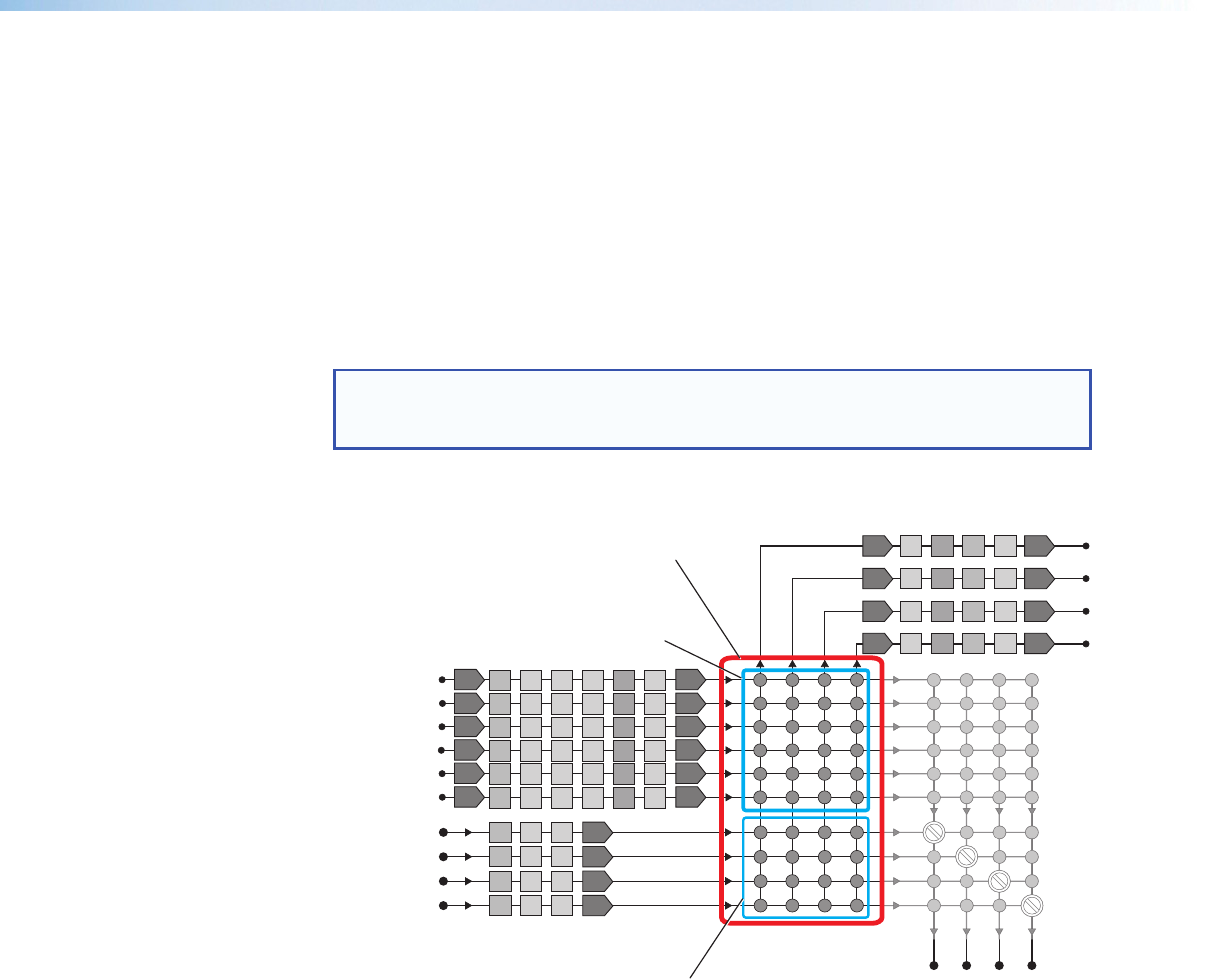
Primary Mix Matrix
The DSP architecture contains a primary mix matrix that connects the mic/line inputs
and virtual bus returns to the line outputs. The DSP Configurator user interface provides
control of the primary mix matrix, used to set mix levels from the post processing inputs
and post processing virtual returns to each line output bus. Each mic/line input and
virtual bus return is connected to a mix-point for each of the four line outputs. In general,
mix levels are set relative to each other, achieving a desired blend of input signals at an
optimal output level, close to, but not exceeding 0dBFS at the line output volume block
level meter (while accounting for processing that can occur in the line output signal chain).
Shown below is a block diagram of the DMP64 represented in the DSPConfigurator, with
a red box indicating the primary mix matrix.
NOTE: Although the virtual bus send and return lines, A to D, are shown as end
points in the block diagram below, they are connected A to A, B to B, C to C and
Dto D.
From the primary mix matrix, any or all of the six inputs can be routed to any or all of the
four outputs. Any or all of the six inputs can also be routed to the secondary mix matrix.
Mic/Line Input 1
Mic/Line Input 2
Mic/Line Input 3
Mic/Line Input 4
Mic/Line Input 5
Mic/Line Input 6
A
B
C
D
1
2
3
4
5
6
ABCD
1
2
3
4
Outputs
Virtual Bus Send
Virtual Bus Return
FLTDLY
LOUD
DYN
VOLTRIM
FLTDLY
LOUD
DYN
VOLTRIM
FLTDLY
LOUD
DYN
VOLTRIM
FLTDLY
LOUD
DYN
VOLTRIM
GAIN
GAIN
FLT FBS DYN
DYN
DLY
DUCK
GAIN
GAIN
FLT FBS DYN
DYN
DLY
DUCK
GAIN
GAIN
FLT FBS DYN
DYN
DLY
DUCK
GAIN
GAIN
FLT FBS DYN
DYN
DLY
DUCK
GAIN GAIN
FLT FBS DYN
DYN
DLY
DUCK
GAIN
GAIN
FLT FBS DYN
DYN
DLY
DUCK
Inputs
FLT DYN
GAIN
LOUD
FLT DYN
GAIN
LOUD
FLT DYN
GAIN
LOUD
FLT DYN
GAIN
LOUD
Primary Mix Matrix
Main Mix-Points
Virtual Return
Mix-Points
Figure 40. Primary Mix Matrix (outlined in red)
DMP64 • Software Control 61



